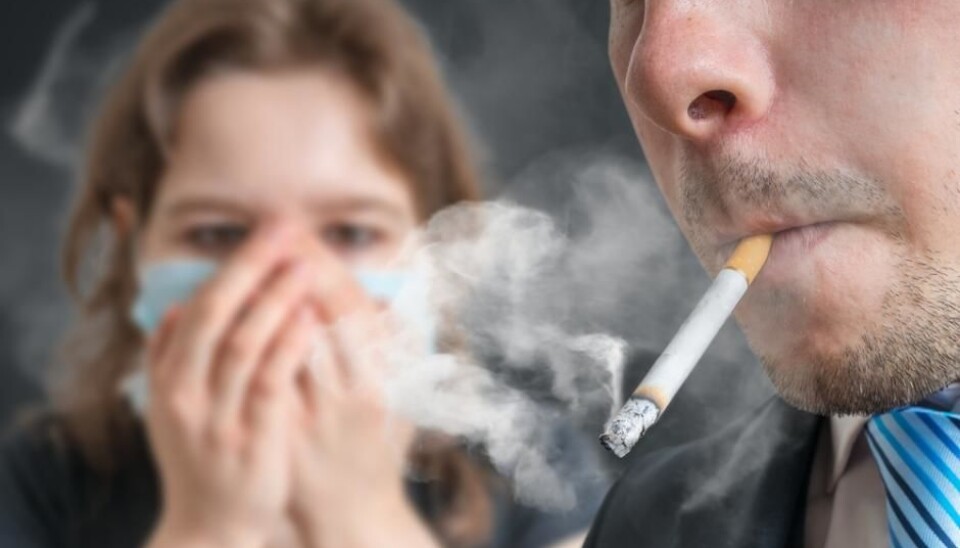
New method to test risk of developing lung cancer
Scientists have developed a method to assess your risk of developing lung cancer based on a blood test. It is more precise than simply asking about patients’ smoking habits, says scientist.
It will not come as a surprise that smokers and ex-smokers have a higher risk of developing lung cancer than the average population.
Scientists have now developed a new method to identify those that have the highest risk.
In the future, doctors will only need to take a blood sample to find out if a patient is in the high risk category. These patients can subsequently be followed up with CT-scans to catch any eventual cases of cancer in the early stages.
It gives a more precise result than other methods, for example, patient questionnaires, and could save lives, say the scientists behind the study.
“We report about a more precise way of identifying patients at high risk of developing lung cancer than the methods in use today. Lung cancer screening is currently not offered in Denmark, but in the future we can target lung cancer screening towards smokers and ex-smokers that actually have a high risk of developing the disease,” says co-author Stig Bojesen, a clinical professor in the Department of Clinical Medicine at the University of Copenhagen, Denmark.
The results are published in the scientific journal Thorax.
Smoking changes your genes
Smoking changes your DNA. Specifically it reduces the so-called methylation of your DNA.
This means that certain chemical groups (methyl-groups) break away from the genome, causing the expression of genes to change.
Methylation can turn genes off or on, but these changes are not passed down to children.
Scientists have shown that smoking can make these kinds of changes to the gene AHRR (Aryl-Hydrocarbon Receptor Repressor), which sits on chromosome five. Smoking leads to less methylation of the AHRR gene and reverts very slowly when you quit smoking.
By measuring the degree of methylation of AHRR the scientists have developed a precise measure of people’s smoking behaviour, and thus their risk of developing lung cancer.
The less methylation on the gene, the higher the risk of developing lung cancer.
“We can assess the degree of methylation of AHRR in a simple blood test, and that can tell us something about a person’s risk for developing lung cancer,” he says.
Bojesen suggests that we can use the degree of methylation of AHRR to evaluate smokers and ex-smokers risk of developing lung cancer.
Read More: Scientists discover mechanisms behind aggressive forms of cancer
Doctors could just ask people
Niels Them Kjær, project leader at The Danish Cancer Society, says the study is interesting and could be used as a supplement to patient questionnaires and the other methods used to measure smokers’ and ex-smokers’ risk of developing lung cancer.
However, he is concerned that the test makes hard work of something that should be simple and he questions whether we really need the test.
“With the exception of pregnant women, the literature says that we can pretty much depend on people's information about smoking. There is basically no need to measure methylation to assess an individual's risk of getting lung cancer,” says Kjær.
“It’ll be much easier to identify risk-groups by asking them about their current and former smoking [habits], and we can also measure people's lung age, which also tells us something about their risk of developing lung cancer, regardless of whether they are smokers or ex-smokers,” says Kjær, who stresses that the new method may not do anything to get people to stop smoking.
Read More: Using our body’s immune system to fight cancer
Studied 7,000 smokers
The study data were taken from the Copenhagen City Heart Study, a health study where doctors collected health information and had patients complete questionnaires between 1991 and 1993.
Participants also volunteered a blood sample.
A total of 9,200 people took part and around 7,000 of them were either smokers or had smoked in the past.
The scientists determined the degree of methylation in the blood samples.
They compared their results with the Danish health registers to find out which of the 9,200 people had subsequently developed lung cancer. There was a clear correlation between the degree of methylation of AHRR and risk of lung cancer.
----------------------
Read the full version of this story in Danish on Videnskab.dk
Translated by: Catherine Jex





